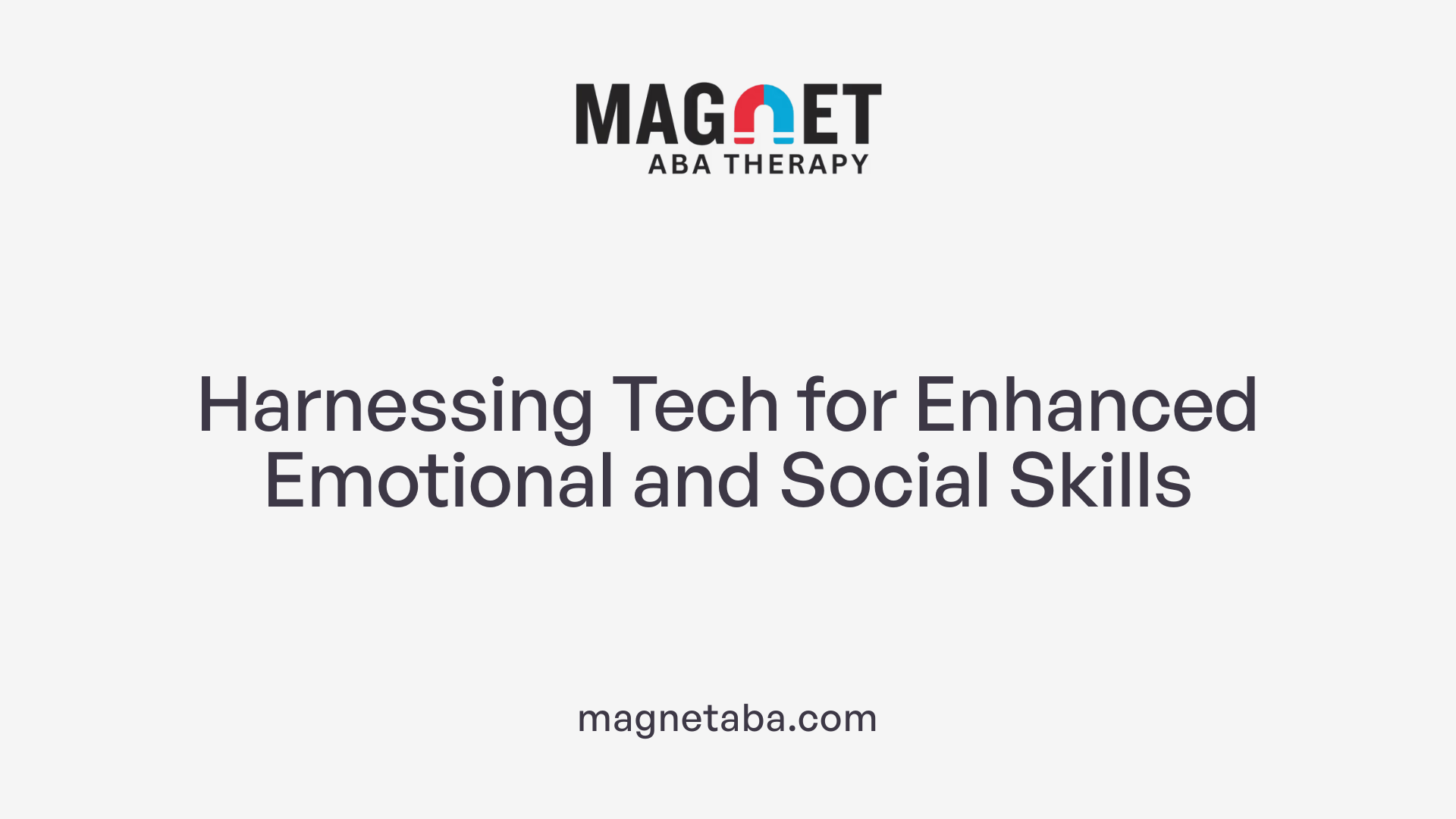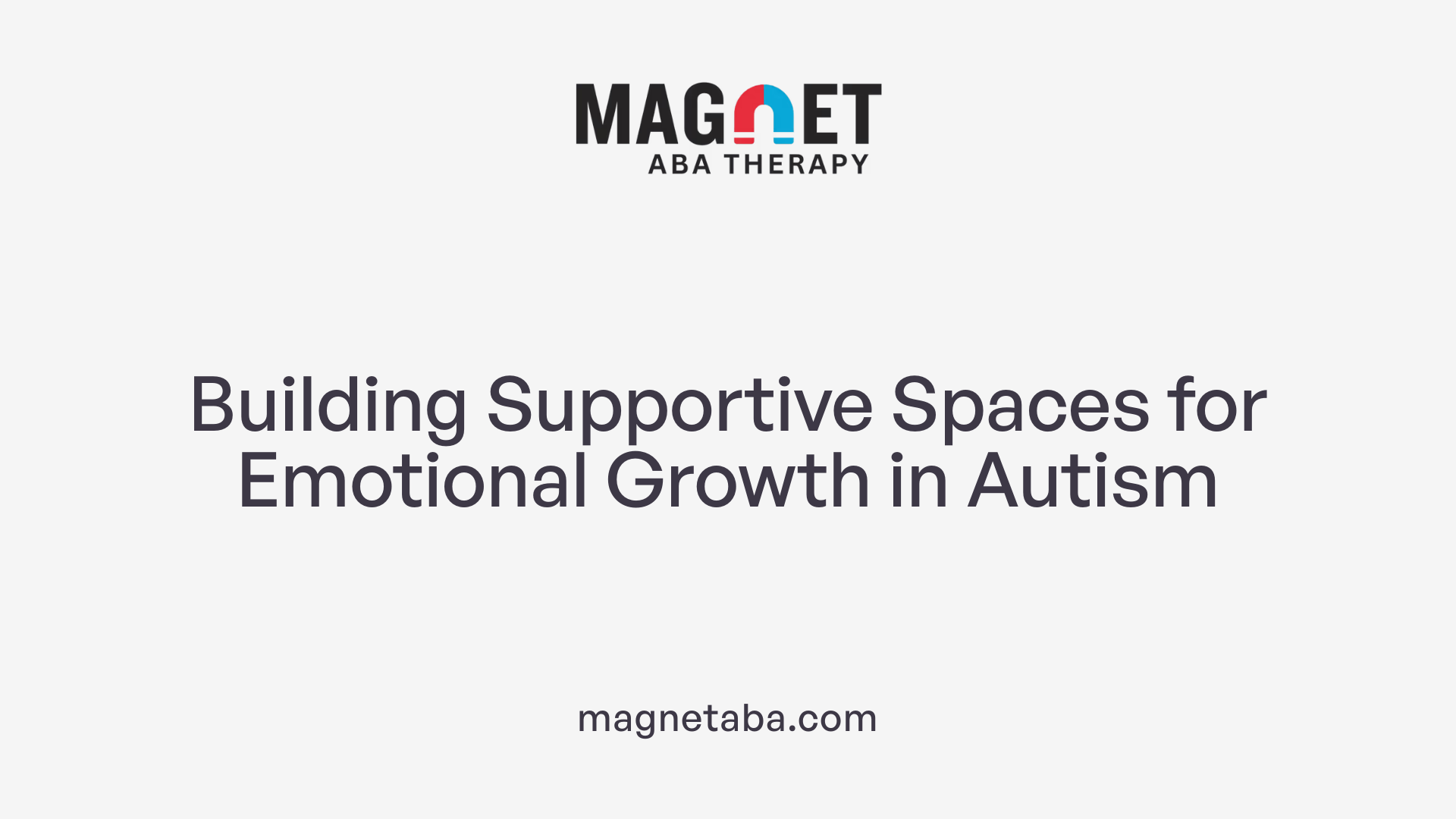Bridging Emotions and Communication through ABA
Applied Behavior Analysis (ABA) therapy stands as a cornerstone treatment for Autism Spectrum Disorder (ASD), focusing not only on behavior management but also on developing vital social and emotional skills. One of the fundamental challenges for many autistic individuals, particularly those with alexithymia, is identifying, understanding, and expressing emotions. This article explores how ABA therapy uses structured, evidence-based methods to build emotional vocabulary and thereby strengthen social-emotional competencies critical for improved well-being and interaction.
Understanding ABA Therapy and Its Role in Autism Support

What is Applied Behavior Analysis (ABA) therapy and how does it help individuals with autism?
Applied Behavior Analysis (ABA) is a science-driven therapy designed to support people with Autism Spectrum Disorder (ASD). It focuses on understanding and improving behavior through structured techniques that promote learning, communication, and social skills. ABA uses principles like positive reinforcement to encourage desirable behaviors while reducing unwanted ones.
Definition and scope of ABA therapy
ABA includes a wide variety of methods such as teaching emotion recognition, social skills training, and communication enhancement. Therapists often employ strategies like role-playing, social stories, and perspective-taking exercises to help individuals interpret and express emotions effectively. These approaches are tailored to each person’s developmental level, making ABA a personalized and comprehensive intervention.
How ABA supports individuals with autism
ABA therapy supports individuals in recognizing their own feelings and those of others, improving emotional regulation through techniques like mindfulness and functional communication training. Assistive technologies such as communication apps, augmented reality, and video modeling further enhance motivation and skill acquisition. The goal is to help autistic people respond to emotions in healthier ways, which reduces challenging behaviors and strengthens social connections.
Core principles and goals of ABA
Central to ABA is the use of structured interventions combined with positive reinforcement to develop social-emotional skills like empathy, turn-taking, and emotional vocabulary. This approach promotes better mental health and overall well-being by helping individuals understand and communicate their emotions clearly. ABA is evidence-based and continuously adapted based on ongoing data collection, ensuring the therapy is effective and meaningful for each person’s unique needs.
Who Provides ABA Therapy and What Qualifications Do They Hold?

Professionals Delivering ABA Therapy
ABA therapy is predominantly administered by Board Certified Behavior Analysts (BCBAs), Registered Behavior Technicians (RBTs), and licensed therapists specializing in behavioral analysis. BCBAs typically hold a master’s degree in behavior analysis, psychology, or related fields, combined with supervised clinical experience.
Qualifications and Certifications Required
BCBAs obtain their credentials by completing an extensive coursework, accumulating supervised practical hours, and passing a rigorous certification exam. RBTs, who often support BCBAs in therapy delivery, complete focused training and fieldwork before certification. Both roles demand ongoing education to stay current with evidence-based practices.
Role of Multidisciplinary Teams
Many ABA providers function within multidisciplinary teams incorporating educators, healthcare professionals, and behavioral specialists. This collaborative structure ensures comprehensive care by integrating various expertise areas to address the diverse needs of individuals with autism.
This robust system ensures that ABA interventions—ranging from emotion recognition and social skills training to communication enhancements—are delivered by skilled professionals committed to improving lives through evidence-based strategies.
Core Goals and Techniques in ABA for Emotional Development
What Are the Common Goals and Techniques Used in ABA Therapy for Autism?
ABA therapy centers on improving communication, social skills, daily living, and community participation while reducing challenging behaviors in individuals with autism. Goals are specifically tailored to each person, drawing from assessments, caregiver insights, and collected data. These targets often include expressive and receptive language, social interaction, emotional recognition, and independence in everyday activities.
How Does ABA Build Communication and Social Skills?
ABA employs strategies such as social skills training, role-playing, social stories, and perspective-taking exercises to foster emotional awareness and social-emotional abilities. Tools like emotion and situation cards help children recognize and label emotions, enhancing their emotional vocabulary. Video-modeling, based on social learning theory, offers a motivating way to learn new skills with reduced anxiety.
How Does ABA Support Emotional Regulation?
To improve handling of emotions, ABA incorporates techniques including replacement behaviors, self-monitoring, mindfulness, and functional communication training. Structured approaches combined with positive reinforcement encourage healthier emotional responses, diminishing difficult behaviors and enhancing social interactions. Assistive technologies like communication devices and augmented reality further support skill development and engagement.
| Aspect | Description | Examples/Methods |
|---|---|---|
| Goals | Improve communication, social/emotional skills, daily living, reduce problem behaviors | Expressive/receptive language, independence |
| Communication & Social Skills | Social skills training, role-playing, social stories, perspective-taking | Emotion cards, video-modeling |
| Emotional Regulation | Replacement behaviors, mindfulness, self-monitoring, functional communication | Mindfulness exercises, use of assistive tech |
This structured, evidence-based approach leads to enriched emotional understanding, stronger social bonds, and overall well-being in autistic individuals.
Building Emotional Vocabulary through Targeted ABA Intervention

Teaching Emotion Recognition and Labeling
A crucial element of ABA therapy for children with Autism Spectrum Disorder (ASD) is the focused training on recognizing and labeling emotions. This process equips children to better understand their own feelings and those of others, addressing common challenges associated with alexithymia in autism. By imparting skills in emotion recognition, children can improve their ability to communicate and regulate emotions.
Use of Emotion and Situation Cards
A proven technique involves using sets of facial expression cards paired with situation cards. Children are taught to match the facial expressions depicting various emotions—such as happy, sad, and angry—to corresponding situational contexts. This method, reinforced through verbal praise, fosters engagement and positive learning. The structured visual aid approach caters to the developmental and communication needs specific to each child.
Outcomes and Benefits of Emotion Vocabulary Training
Research employing a multiple-baseline design with children aged 6.1 to 9.6 has demonstrated that targeted emotion vocabulary training within ABA can significantly enhance children's ability to "tact" or label emotions. Children learned to generalize this knowledge to new situations and to articulate their own emotional experiences. Such proficiency in emotional language correlates with increased social engagement, reduced disruptive behaviors, and better mental health. These findings support incorporating direct emotion vocabulary teaching into individualized ABA programs, providing structured pathways for improved emotional understanding and social competence.
Tools and Techniques Enhancing Emotional Awareness in ABA
Role-playing, Social Stories, and Perspective-taking
ABA therapy incorporates interactive strategies like role-playing, social stories, and perspective-taking exercises to promote emotional awareness. These methods help individuals with autism practice social interactions in a structured and supportive environment, allowing them to better recognize and understand emotions in themselves and others.
Mindfulness and Relaxation Techniques for Emotional Regulation
Mindfulness and relaxation techniques are vital components within ABA to assist emotional regulation. By incorporating these practices, individuals learn to manage anxiety and reduce emotional dysregulation, fostering healthier emotional responses in daily social situations.
Replacement Behaviors and Self-Monitoring
ABA also employs techniques such as replacement behaviors and self-monitoring to enhance emotional control. Replacement behaviors redirect challenging responses into positive actions, while self-monitoring encourages individuals to observe and regulate their emotional states actively. Additionally, functional communication training supports expressing emotions effectively, contributing to improved emotional regulation and social interaction.
Technology Innovations Supporting Emotional and Social Skills in ABA

Assistive Communication Devices and Mobile Apps
ABA therapy integrates various assistive technologies to enhance social communication skills among individuals with autism. Mobile applications like Proloquo2Go, Leeloo, and ABC Autismo are clinically validated tools that support communication, cognitive development, and motor skills. These apps offer customizable interfaces to promote independence and interaction.
Video-Modeling and Robotics in Therapy
Video-modeling techniques, grounded in Bandura’s social learning theory, provide a motivating and less intimidating way for children with autism to acquire social and emotional skills. Robotics, such as SoftBank’s NAO robot, deliver interactive learning experiences that assist in both teaching social behaviors and assessing autism traits. These technologies create engaging, repetitive, and controlled environments ideal for skill-building.
Emerging Neural Command Technologies and AI Applications
Cutting-edge neural command devices are in early stages, aiming to facilitate communication using brainwave control for those with severe speech impairments. Artificial intelligence complements ABA by helping predict personalized treatment plans and enhancing resource allocation in autism management. This synergy of AI and machine learning promotes optimized and efficient therapy.
Through these technological advancements, ABA therapy is evolving to provide more personalized, interactive, and effective support for emotional and social development in autistic individuals.
Challenges of Alexithymia in Autism and ABA’s Supportive Role

What is alexithymia and its impact on emotional processing
Alexithymia is a condition commonly found in individuals with autism spectrum disorder (ASD) that involves difficulty identifying, understanding, and expressing emotions. Although not a mental illness, it significantly affects emotional processing and communication. People with alexithymia may struggle to recognize their own emotional states and interpret emotional cues from others, which can lead to frustration, emotional dysregulation, and social isolation.
How ABA addresses alexithymia-related difficulties
Applied Behavior Analysis (ABA) therapy plays a crucial role in helping individuals with alexithymia develop emotional awareness and regulation. ABA employs strategies such as visual aids, social stories, role-playing, and emotion labeling to teach children how to recognize and express emotions effectively. Techniques like matching facial expression cards to scenario cards, reinforced by verbal praise, have shown success in improving emotional vocabulary and the ability to generalize this knowledge to new situations. Mindfulness and relaxation exercises also help manage anxiety and promote emotional regulation. ABA’s structured approach and positive reinforcement encourage healthier responses to emotions, reducing challenging behaviors while enhancing social skills.
Importance of specialized professional support and caregiver involvement
Effective support for children with autism and alexithymia requires specialized professionals trained in ABA techniques. They guide interventions tailored to each child's developmental and communication level. Caregivers and parents also play a vital role by fostering emotional development through patience, visual supports, and creating supportive environments where children can practice emotional expression safely. Together, professional and family involvement enhances emotional understanding, social engagement, and overall well-being in children facing alexithymia-related challenges.
Creating Supportive Environments to Foster Emotional Communication

Role of Parents and Caregivers in Emotional Skill Development
Parents and caregivers play a crucial role in nurturing emotional skills for children with autism. By practicing patience and providing consistent support, they create a safe, encouraging environment where children feel comfortable expressing emotions. Utilizing visual supports like emotion cards and social stories can help children learn to identify and describe feelings more effectively.
Use of Visual Supports and Structured Socialization Opportunities
Visual aids such as facial expression cards paired with scenario cards are effective tools for teaching emotion recognition and vocabulary. Structured socialization opportunities—planned interactions and role-playing exercises—allow children to practice emotional expression and social skills in controlled, supportive settings. These methods help reduce frustration and enhance emotional regulation.
Collaboration Between Therapists and Families
A strong partnership between therapists and families is essential to sustain progress in emotional communication. Therapists provide specialized strategies such as mindfulness training, replacement behaviors, and functional communication training, while families reinforce these approaches through daily routines. Collaborative teamwork ensures that interventions are tailored to each child's developmental and communication needs, resulting in improved social engagement and mental health.
Empowering Emotional Growth Through ABA
ABA therapy's structured, evidence-driven methods provide invaluable tools for building emotional vocabulary and enhancing emotional understanding in individuals with autism. By addressing challenges such as alexithymia and employing diverse strategies—from role-playing to innovative technology—ABA helps individuals not only identify and express emotions but also regulate them effectively. Collaborative efforts by qualified professionals, caregivers, and therapists create supportive environments where autistic individuals can thrive socially and emotionally. The focused development of emotional language through ABA contributes substantially to improved social participation, mental health, and overall quality of life, confirming ABA as an essential approach in autism care.
References
- How Does ABA Help with Emotions in Autism?
- Technology and Applied Behavior Analysis (ABA)
- Alexithymia in Autism: Emotional Expression and ...
- A teaching procedure to help children with autistic ...
- How to Become an ABA Therapist - School of Education
- Applied Behavior Analysis (ABA)
- Applied Behavior Analysis (ABA)












